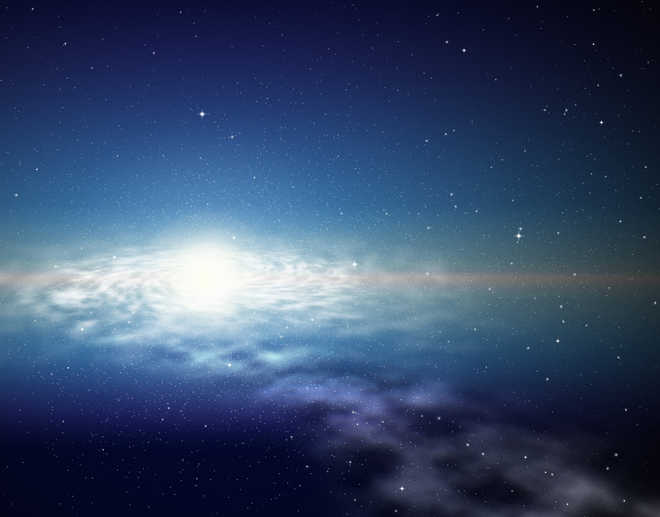
For repersentation only. Photo source: Thinkstock
London
A team of astronomers has identified a young star, located almost 11,000 light years away, which could help us understand how the most massive stars in the universe are formed.
This young star — already more than 30 times the mass of our Sun "is still in the process of gathering material from its parent molecular cloud, and may be even more massive when it finally reaches adulthood".
An average star like our Sun is formed over a few million years, whereas massive stars are formed in orders of magnitude faster — around 100,000 years.
"These massive stars also burn through their fuel much more quickly, so they have shorter overall lifespan, making them harder to catch when they are infants," said Dr John Ilee from University of Cambridge's Institute of Astronomy.
The protostar that Ilee and his colleagues identified resides in an infrared dark cloud - a very cold and dense region of space, which makes for an ideal stellar nursery.
By using the Submillimeter Array (SMA) in Hawaii and the Karl G Jansky Very Large Array (VLA) in New Mexico, the researchers were able to "see" through the cloud and into the stellar nursery itself.
The researchers identified a key stage in the birth of a very massive star and found that these stars form in a similar way to much smaller stars like our Sun - from a rotating disc of gas and dust.
The team was able to determine the presence of a "Keplerian" disc — one that rotates more quickly at its centre than at its edge.
"This type of rotation is also seen in the solar system — the inner planets rotate around the Sun more quickly than the outer planets," said Ilee.
"It's exciting to find such a disc around a massive young star, because it suggests that massive stars form in a similar way to lower mass stars, like our Sun," the author noted.
The results were reported in the journal Monthly Notices of the Royal Astronomical Society. — IANS



























